Fixing Image Upload Issues In WordPress

Images are a super duper important part of any website. We process visual content way faster than text, and pictures can help us understand complex ideas.
As a site owner, this means spending a lot of time with photos. And when you’re regularly uploading images to your WordPress website, it’s only natural to stumble upon the occasional error message.
Fortunately, there are ways to diagnose even the fuzziest image upload issue. After running through a checklist of common fixes, you should have no problems adding beautiful, eye-catching visuals to your website.
In this article, we’ll look at why image-related errors can be tricky to diagnose. We’ll then share five solutions for you to try the next time the WordPress Media Library doesn’t want to cooperate with your creative vision. Let’s get started!
An Introduction To WordPress Image Errors (And Why They’re A Problem)
Beautiful visuals aren’t just pretty to look at. If you’re running an e-commerce store, product images are particularly important for driving sales, because they let people see what they’re purchasing. Maybe that explains why images make up around 40% of the median web page.
However, uploading images to WordPress isn’t always straightforward. Sometimes, this popular Content Management System (CMS) displays a failure to upload error. These issues are notoriously difficult to diagnose, as a number of factors trigger them. This can make it difficult to know where to start to address the problem.
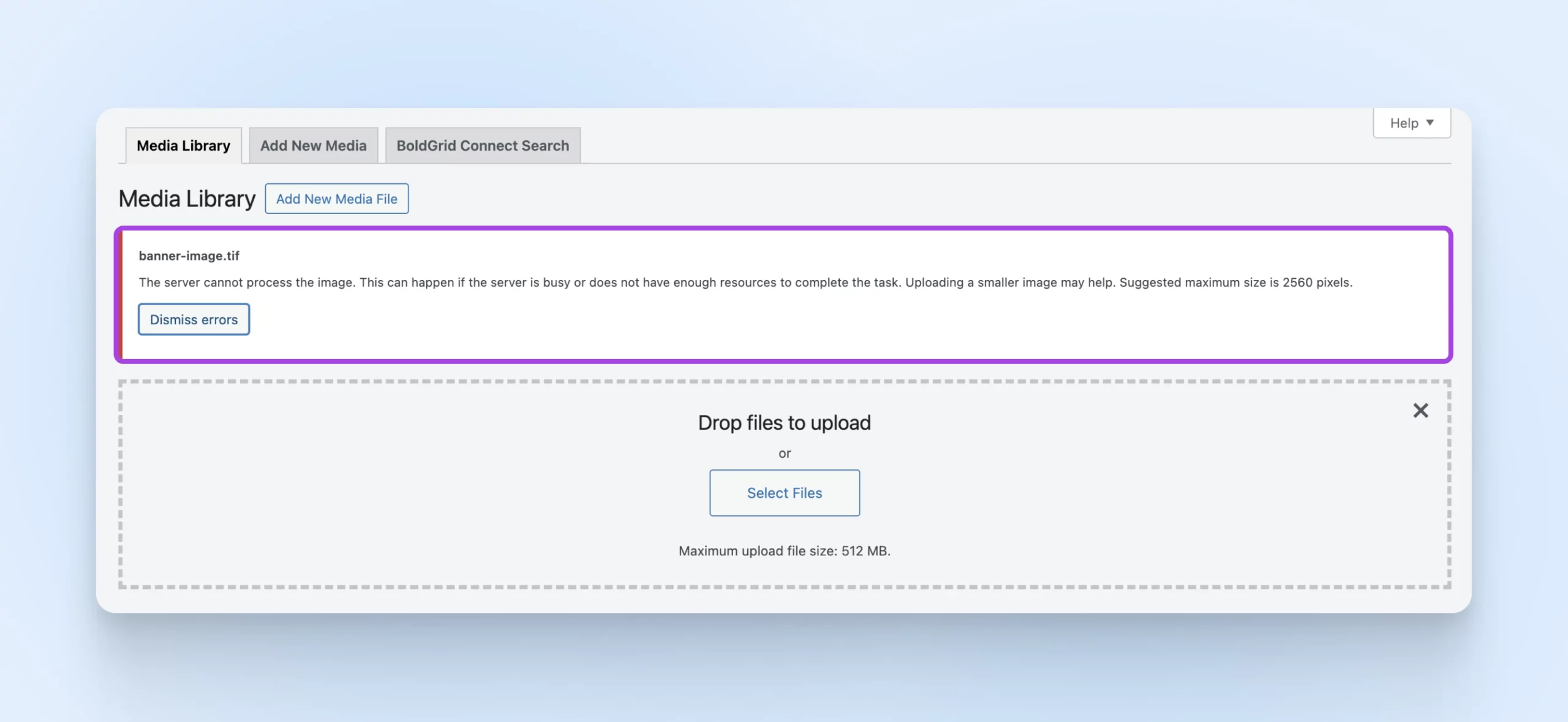
The good news? We’re going to walk you through the steps we take to identify and fix image upload issues in WordPress.
We’ll Fix Your Image Upload Issue
Skip the troubleshooting when you sign up for DreamPress. Our friendly WordPress experts are available 24/7 to help solve website problems — big or small.
Check out plans!
Get Content Delivered Straight to Your Inbox
Subscribe to our blog and receive great content just like this delivered straight to your inbox.
Common WordPress Image Upload Errors And How To Fix Them (5 Methods)
The last thing you want is your workflow interrupted by a vague error message. Below are five ways to fix upload errors, so you can start adding stunning images to your website. Pronto.
1. Adjust The Image File Name And File Size
If you’re only encountering issues with a specific image file, you can start by looking at the file name. If you’re using special characters ($, *, &, #) or accent letters (ñ, á, é), these can cause issues with the WordPress media library.
File Manager
A file manager is a software application that enables users to manage their files. It typically provides a Graphical User Interface (GUI) where people can browse through their files, open them, edit them, and save them.
Read More
The image may also be too large — both, in terms of dimensions and file size. You can change an image’s dimensions using your favorite editing program. If you’re trying to upload a particularly high-resolution graphic, you can squeeze the size without impacting the quality, using a compression tool such as TinyPNG.
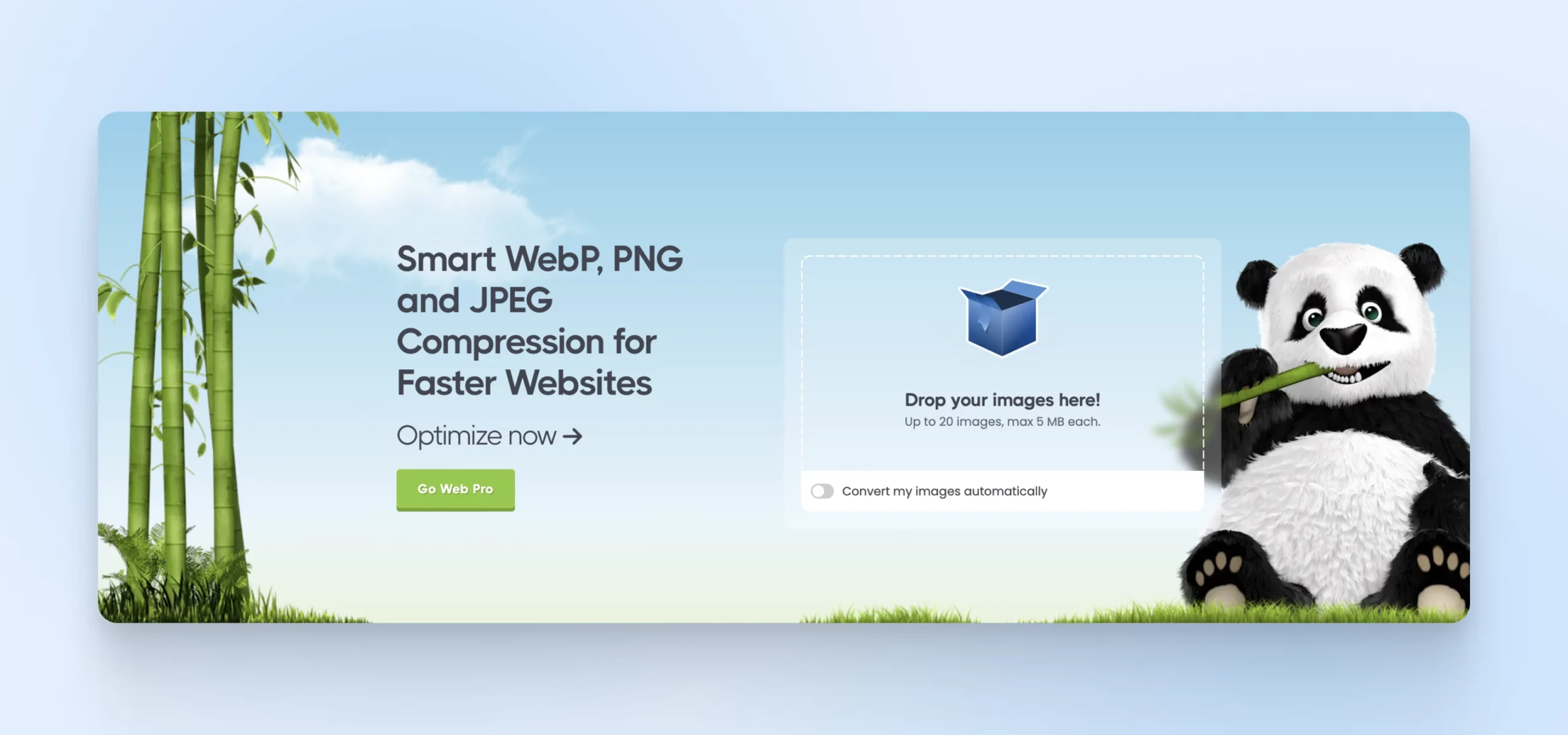
If you regularly encounter issues due to file size, then WordPress’s limit may be set too low. You can raise the maximum upload size by adding code to your site’s php.ini file:
upload_max_filesize = 128Mpost_max_size = 128Mmax_execution_time = 300
If your site doesn’t already contain a php.ini file, you can create it inside the PHP folder for the current PHP version your site is running. Then, simply add the above code at the end of the file.
2. Increase The Memory Limit Of Your WordPress Site
When you try to upload an image, you might encounter the WordPress HTTP error. This can sometimes be caused by low server resources or unusual traffic. For this reason, it’s always worth waiting a few minutes and then attempting to re-upload the image.
If the issue doesn’t resolve itself, then you may be exceeding the WordPress memory limit. You can increase the amount of memory that PHP can use on your server by connecting to your site over SFTP.
SFTP
Secure File Transfer Protocol (SFTP) is a safer version of the FTP protocol that uses a secure shell data stream.
Read More
Next, open your wp-config file. You can then add the following, which will increase the limit to 256MB:
define( ‘WP_MEMORY_LIMIT’, ‘256M’ );
You can also define your WP_MAX_MEMORY_LIMIT in the same way, should you want to try overriding the memory limit specifically for backend tasks.
If you’re still unable to upload visual content, your problem might be related to threading. WordPress processes images using either the GD Library or Imagick module, depending on which one is available.
Imagick was designed to use multiple threads to accelerate image processing. However, some shared hosting providers limit Imagick’s ability to use multiple threads, which can result in an HTTP error. You can often resolve this issue by adding the following to your .htaccess file:
SetEnv MAGICK_THREAD_LIMIT 1.
Remember to check with your host if you can change thread limits.
Related: How To Fix The WordPress Memory Exhausted Error By Increasing Your Site’s PHP Memory Limit
3. Deactivate Your Plugins
Third-party software can sometimes interfere with your image uploads. If you’re using any plugins, it’s always worth deactivating each one individually and testing to see whether this resolves your image upload issue.
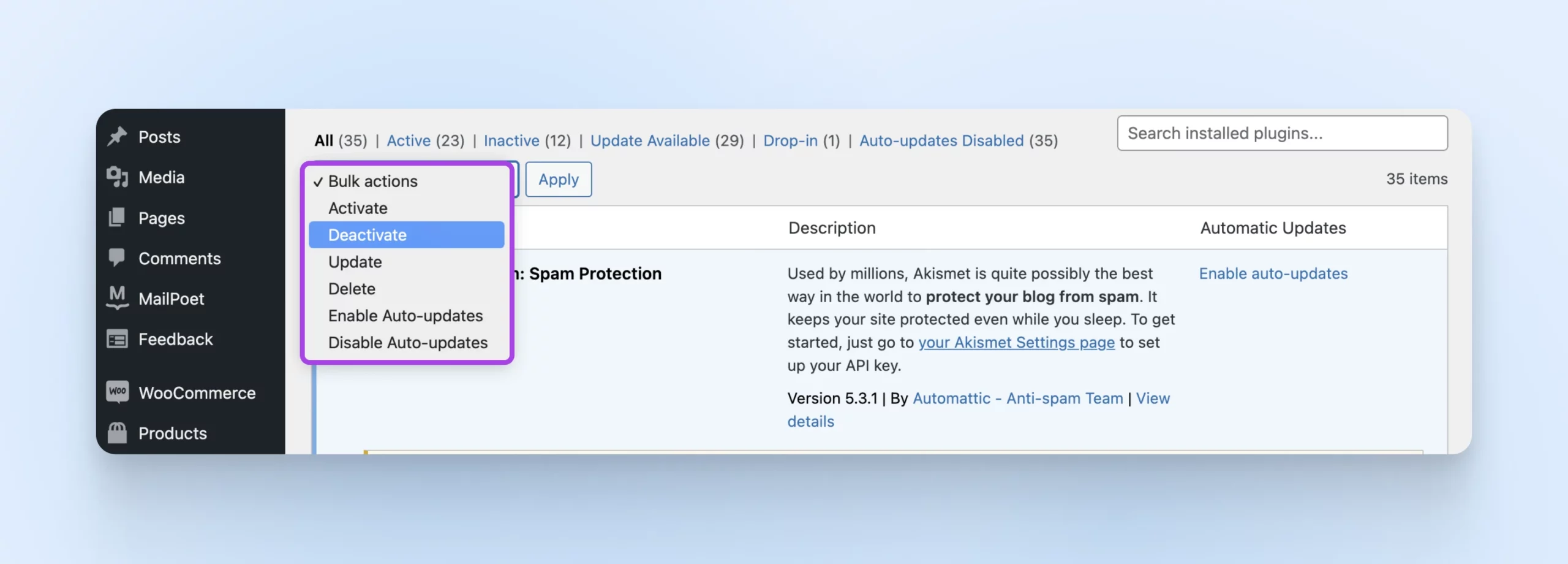
If a plugin is to blame, you can double-check to make sure you’re running the latest version. If you’ve fallen behind on your updates, you may be struggling with a problem that’s already been resolved in recent updates.
However, if you are in fact running the latest version, we recommend contacting the plugin’s developer to make sure that they’re aware of the issue. This can also be an opportunity to ask whether they plan to solve this problem in their next release. If the plugin is critical to your site and there’s no fix on the horizon, it might be time to look for an alternative solution.
Related: The Beginner’s Guide To WordPress Plugins
4. Clear Your Site’s Cache
If you’re using a caching plugin, then clearing the cache may be enough to resolve your image upload issues. We should mention, however, that it’s incredibly rare for the cache to prevent a file upload, so we’re including this fix out of an abundance of caution.
If you think that caching could be causing the error, the steps you take will depend on your chosen caching solution. For example, if you’re using the W3 Total Cache plugin, you can clear the cache by selecting Performance > Purge All Caches from the WordPress toolbar.
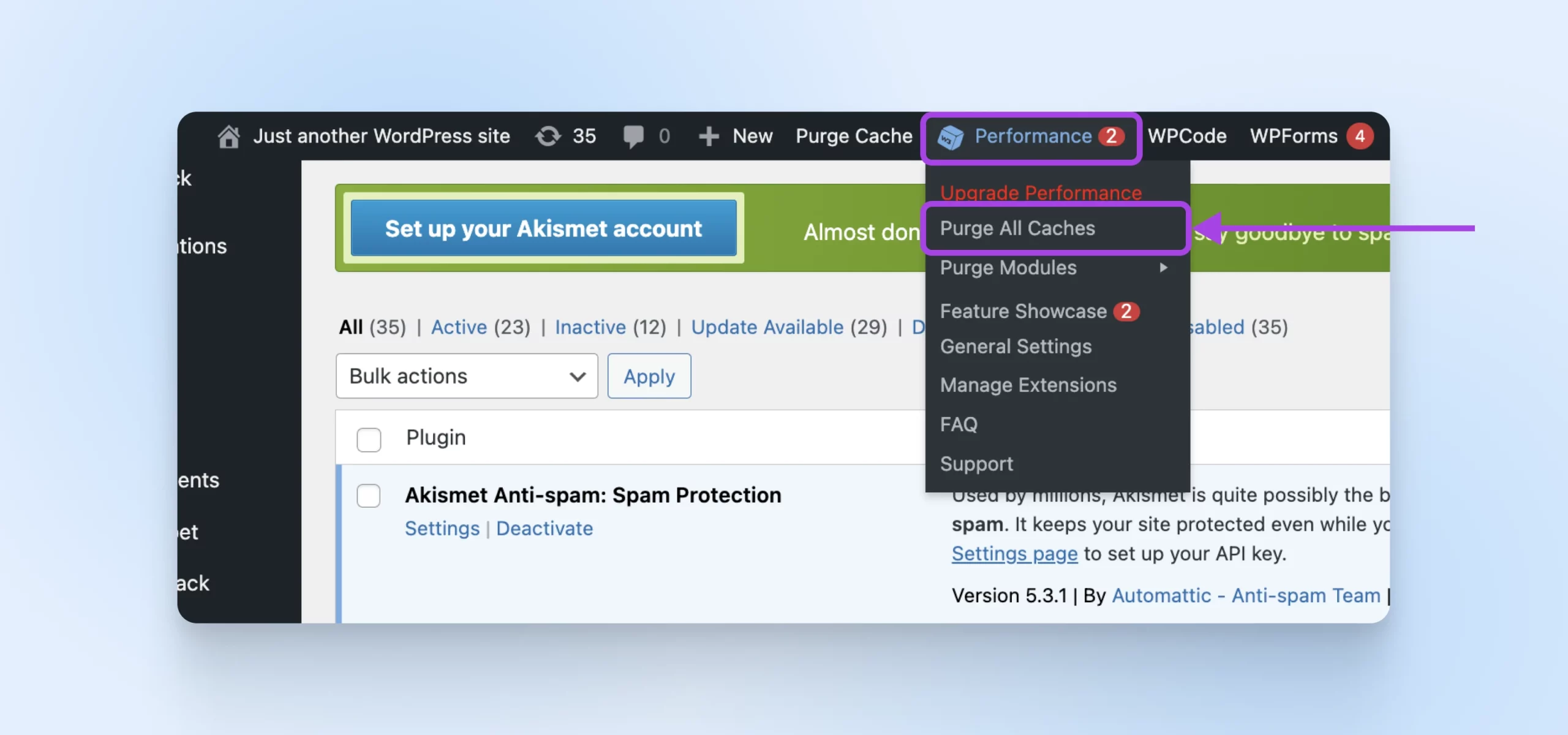
If you’re unsure how to clear the cache in your specific tool, the plugin’s settings menu is often a good place to start. You can also check the developer’s official documentation for more details.
5. Try The Browser Uploader
Still having issues? If you’ve tried all of the above fixes but the problem persists, you can use your browser’s built-in file uploader. Unlike WordPress’s image uploader, the browser uploader doesn’t support multiple file selection or drag and drop. However, it can be a useful workaround when you need to upload an image quickly.
To access the native image uploader, navigate to Media > Add New Media File. You can then select the browser uploader link.
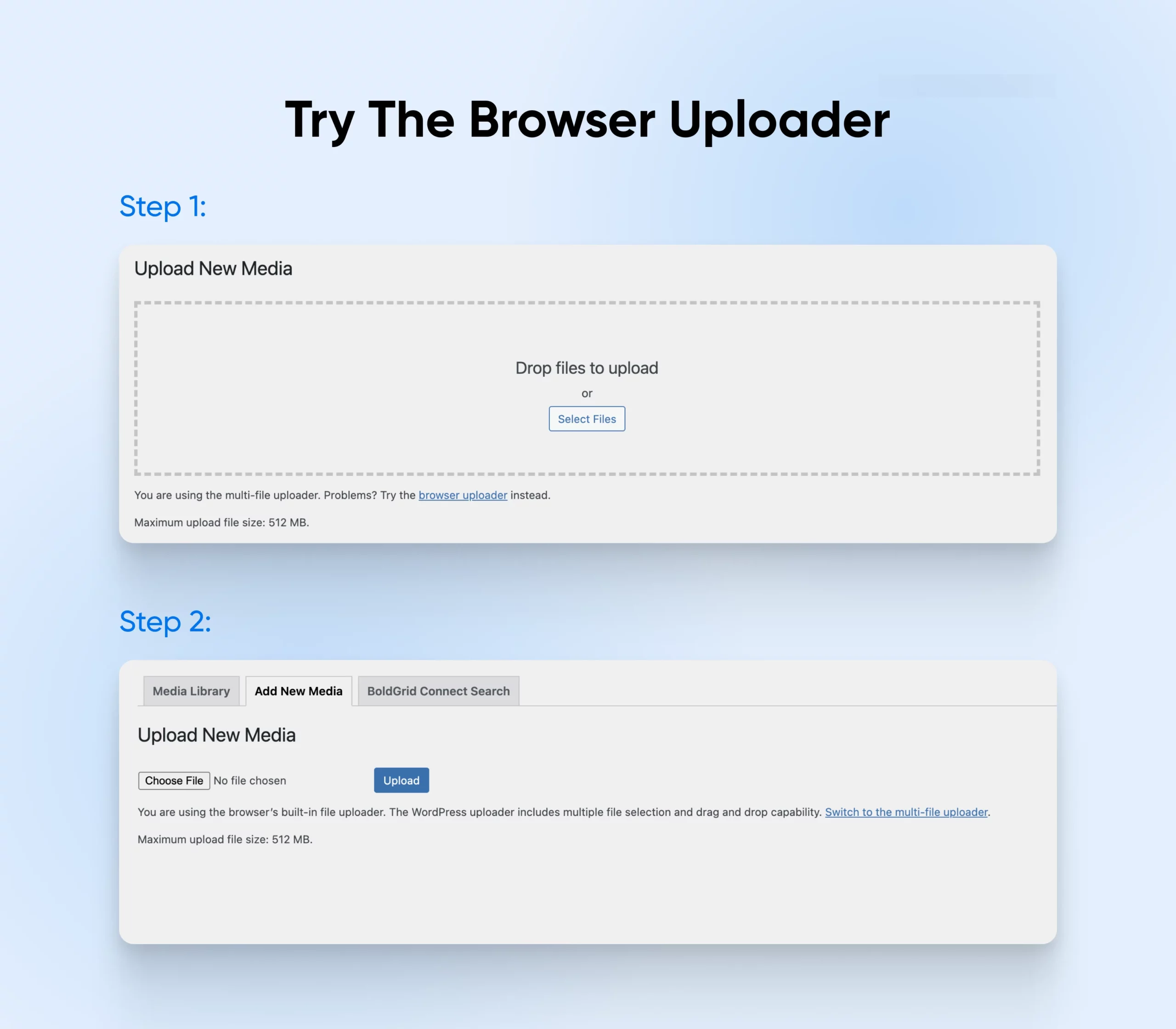
Next, click on Choose File. This launches the familiar file selection dialog, where you can upload the image as you normally would. If this workaround succeeds, we recommend trying to upload an image using WordPress’s standard image uploader afterward — just to check whether it resolved your issue.
FAQs About Fixing Image Upload Issues In WordPress
Have more questions? Luckily, we have an endless supply of answers. Here are some of the most common requests!
Why am I getting an HTTP error when uploading images?
In most cases, HTTP errors are caused by one of the following issues:
- The images you’re uploading exceed the file size limits
- Plugin conflicts are interfering with uploads
- There are problems with your browser’s cache
Why are my image files taking so long to upload?
A slow internet connection, a large file size, server performance, or high traffic on your website could all be contributing factors. Here’s a detailed guide to fixing slow image uploads.
What is the “Unable To Create Directory” error?
Normally, this problem occurs when a plugin or script can’t create a new directory within your website’s file system. This can happen if the program has insufficient permissions to write to the target location, or is using a file path that doesn’t exist. Also, it can happen when your storage is full.
Additional WordPress Error Tutorials
Once you’ve solved your image upload error, the adventure isn’t over. There’s always more to learn about WordPress! We’ve put together several tutorials to help you troubleshoot other common WordPress errors:
Want more information on managing a WordPress site? Check out our WordPress Tutorials, a collection of guides designed to help you navigate the WordPress dashboard like an expert.
WordPress Images Made Easy
Visuals are crucial for catching (and holding) your visitors’ attention, but image upload issues are frustratingly common. By following our simple steps, we’re confident that you can get your site back on track — even when the error message itself doesn’t provide much information.
Let’s quickly recap five ways to resolve common WordPress image upload issues:
Tired of troubleshooting WordPress errors on your own? All of our DreamPress hosting packages include 24/7 customer support, so you’re always covered.
We also offer unlimited traffic, automatic WordPress updates, and daily backups to keep your site running smoothly — and plans that start at just $2.59 per month.
Sign up today to try the DreamHost experience for yourself!
Get Content Delivered Straight to Your Inbox
Subscribe to our blog and receive great content just like this delivered straight to your inbox.



